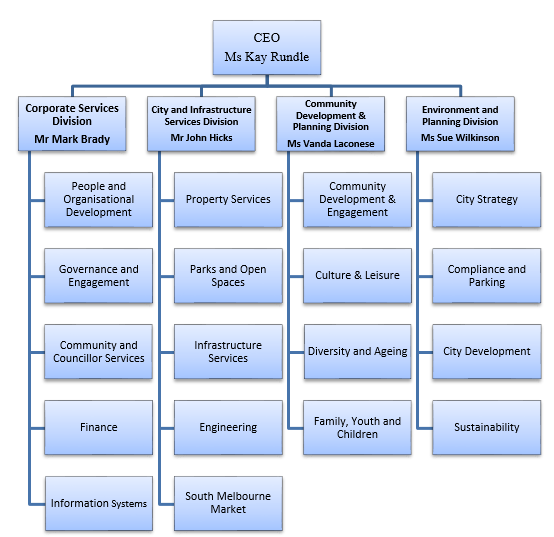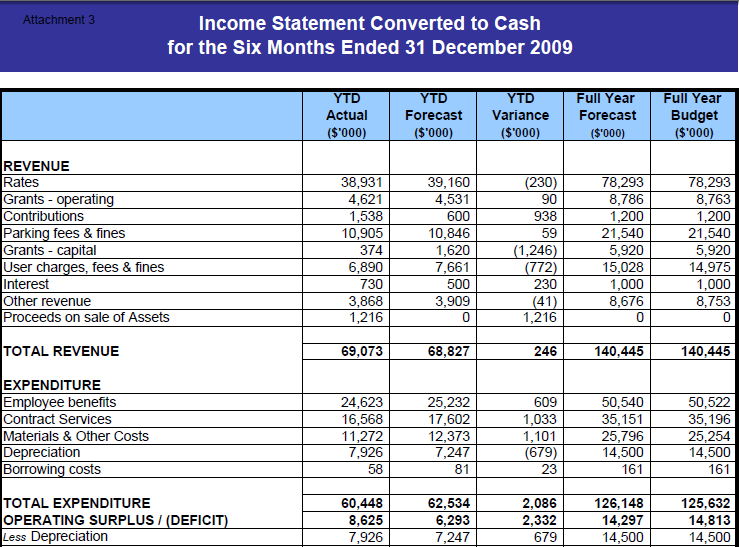Overview of the organization
The city of Port Phillip is a combination of the former cities of port Melbourne, St. Kilds and South Melbourne. The city was formed in 1994 as one of the European settlement areas in Melbourne. It is well known for its dynamic urban villages, richness of diversity, cultural diversity, outstanding heritage buildings, recreational facilities and artistic expressions and entertainment venues. The entire port Phillip city is managed by the city council, which provides the community with a variety of services including payment of fines and bills, traffic and road service, garbage and environment service, housing support and planning and building service. For the council to provide efficient services to its community, it reviews and updates the quality of services on an annual basis (Harcourt 2001).
Business complexity
The mission and vision statements of port Phillip municipality portray an image that reflects their zeal to achieve an environment that provides the community with cultural liveliness, environmental accountability, economic capability and social impartiality. In their quest to achieve this, they bring about unity among the people, helping in the growth of community leadership (Shaw 1996, p 63). The objectives of port Phillip municipality target various issues in society, and the complexity of the organization’s structure can be seen in figure 1 below.

From the organization structure, it is clear that the council of port Phillip has four divisions, which are monitored by the CEO, Ms Kay Rundle. Each of the divisions has its unique affairs and service units that are beneficial in achieving the goals of the council to its community. The four divisions are briefly discussed below.
Corporate services division
This division looks at the functions that support the daily duties within the corporation. It is headed by Mr. Mark Brady, and provides five main services namely: development of people and organization, governance and engagement, community and councilors services, finance and information systems.
City and infrastructure services division
It is headed by Mr. John Hicks, and attends to matters pertaining to engineering, infrastructure, property, parks and open spaces and Melbourne market services.
Community development and planning division
This division is run by Ms Vanda Laconese and attends to services related to development and engagement, culture and leisure, diversity and ageing and family, youth and children services.
Environment and planning division
It is headed by Ms Sue Wilkinson and attends to matters pertaining to the environment such as city strategy, compliance and parking, city development and sustainability.
Technical complexity
The technical aspect in port Phillip is necessary for the efficient running of operations, including protection of privacy and the payment processes. The daily functions of port Phillip are run by a structured IT system with the aid of the council. The information system provides e-business solutions based on applications that require registration and online payments. The first information system purchased by port Phillip was in 1997.
Installation and development of the Financial Management Information System (FMIS) were conducted by Computron. During its initial implementation, the new system introduced a decentralized approach with incorporated levels of security and allowed flexibility and accessibility among managers of the different business units. It also provided avenue to incorporate basic financial functions like budgeting & purchasing down to the business unit level. Additionally, it provided speed and accuracy in the generation of financial reports (Malan, Ruth, & Bredemeyer 2006, p. 36).
The payment modes provided by the website are POSTbillpay and Maxipay. POSTbillpay is the more popular way for paying bills online while Maxipay is only useful for paying the parking fine online. The problem with this kind of online payment is that any citizen can make the payment without having to log into the website, as a registered member. Enterprise architecture was used to integrate membership on the website and payment of the bills to offer better and more reliable services (Malan, Ruth, & Bredemeyer 2006, p 33).
In addition to making online payments, the citizens are also able to make telephone calls and interact through email services. When people browse the website, they can post feedback material that can help the council improve their services. The highly integrated applications and technologies of EA are beneficial in assisting the council to effectively manage the various components of interaction within the organization.
The organization is keen to attain new heights in technological advancement, and this requires them to have a good IT management team that is capable of directing the organization in the right path, through formulation of strategies. Advancement is sought in various fields including the FMIS, revenue management organization systems and geographic management systems among others (Bredemeyer 2008, p 54).
The present technological environment allows port Phillip to generate more revenue through e-commerce payment system. In addition to this, the workforce can maximize on the advantages presented by providing information concerning port Phillip online. At the same time, the provision of advanced technologies creates higher risks that demand stringent security measures to protect the resources of the corporation. From the prospects of port Phillip, we can deduce that they require EA for efficient implementation of the technologies (Harcourt 2001).
Financial resources
Port Phillip draws its revenue from a variety of sources including parking revenue, grants and user fees and charges among others. Examination of the report from port Phillip council shows that the total revenue generated exceeds the expenditure, implying that the port is capable of paying for the EA services. The primary source of revenue is rates, parking fees and fines whereas the main expenditure is contract services and employee benefits. The financial report of the city of Port Phillip for six months before 31st December 2009 is shown below (Harcourt 2001).

Competition in the industry
The responsibilities and duties of port Phillip are unique to it and it therefore faces little competition in its field. One of its threats is government agency competition for modernization of their processes, which has little effect on the establishment of EA. Port Phillip, also competes with the private enterprises that provide services to the public (Port Philip Municipality 2008, p 33).
Managerial expertise
Looking at the technical skills required for enterprise architecture, clearly visible from its organizational chart, it can be seen to contain a limited number of employees, though it is well structured. The structure is necessary to achieve good management practices, as the duties of each division are outlined, and the heads can then monitor their tasks. Good management practices are seen in the implementation of various duties including setting up garbage and recycling collection points, and the effective water management system that deals with cleaning the street and beach. Their technological advancements and adjustment of EA are also aimed at increasing their reliability.
EA has brought about the culture of corporations as can be seen through online advertising on the website of city of port Phillip and the formulation of privacy policy and regulations, in addition to the enforcement of local laws in its various departments, to protect its corporate culture (Port Philip Municipality 2008, p 41).
Strategic Planning Level
The provision of information regarding port Phillip through the internet is one of the indications of good strategy in the council, as it shows their high level of understanding e-business solutions. In addition to this, there are a variety of online services available through their website, and efficient knowledge management, signified by EA of management practices (Harcourt 2001).
The plans involving both the council and the community, include plans that involve engaging and governing the city, taking action on climate change, strengthening our diverse & inductive communities and enhancing livability. The operation of these plans has to be according to the annual budget, department plans and individual plans. Inclusive decision making is made possible by involving the public by encouraging open communication through feedback channels like the website (Frauenfelder 1999, p 22).
Decision on Port Phillip
The available information was used to make a rational decision regarding the viability of enterprise architecture in port Philip municipality. The most important elements when evaluating the readiness of businesses to EA are clear vision and strategic objectives, understanding core competencies and having architectural maturity. The availability of information regarding port Phillip on the web is an indication of their willingness to exercise transparency.
Their approach to service delivery where they exercise promptness shows their willingness to provide the organization’s flexibility and openness to the public. This also shows that port Phillip does not have delays associated with queuing information. The implementation of EA would improve on service delivery, though the structure of the organization is quite small, and its implementation would lead to complication of things (Frauenfelder 1999).
The services of port Phillip that are available online are doing not necessarily require enterprise architecture. This is because the technological aspects in port Phillip are limited to simple online functions and e-services. The technologies in implementation do not integrate well with the applications, and the processes to communities. Based on the nature of the organization, a significant amount of port Phillip’s revenue comes from grants from the government, and this amount is allocated to particular items, which limits the diversion of an adequate sum of money to the development of information technology.
In addition to this, reports have indicated a deficiency in the strategic planning level of the council, to effectively carry out Enterprise architecture, and there is no competition in the industry. Considering the information provided regarding port Phillip, the introduction of enterprise architecture would be beneficial to the organization, though in the current situation whereby the revenue is limited and restricted while strategic planning appears to be wanting, it is not advisable for port Phillip to apply EA.
References
Bredemeyer, S. L., 2008. The Visual Architecting Process. New York: Cutter Consortium.
Frauenfelder, P., 1999. Social Conditions and Political Life. The Colonial Experience. Port Phillip District. Melbourne: Education Centre, State Library of Victoria.
Harcourt, R., 2001. Southern Invasion Northern Conquest. Story of the Founding of Melbourne. Melbourne: Golden Point Press.
Malan, Ruth, & Bredemeyer, D., 2006. Enterprise Architecture as Strategic Differentiator. Enterprise Architecture Executive Report.
Port Philip Municipality, 2008. Municipal Emergency Management Plan: City of Port Phillip. Port Philip Municipality.
Shaw, A., 1996. A history of the Port Phillip District: Victoria before separation. Carlton South, Victoria: The Miegunyah Press.